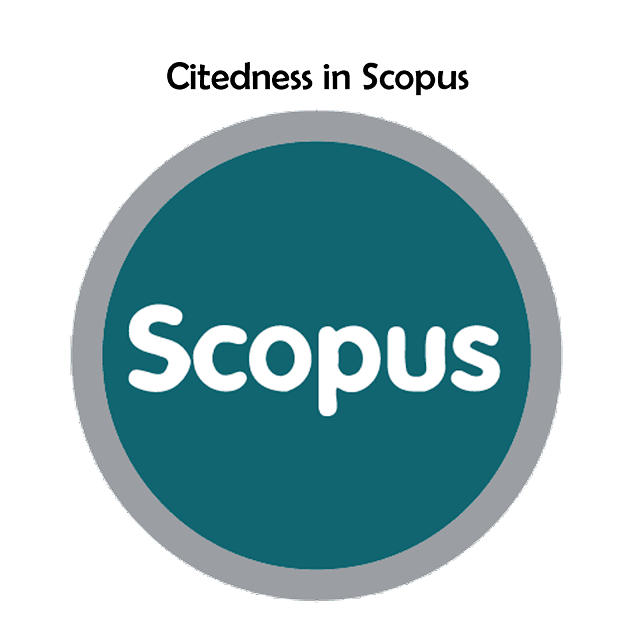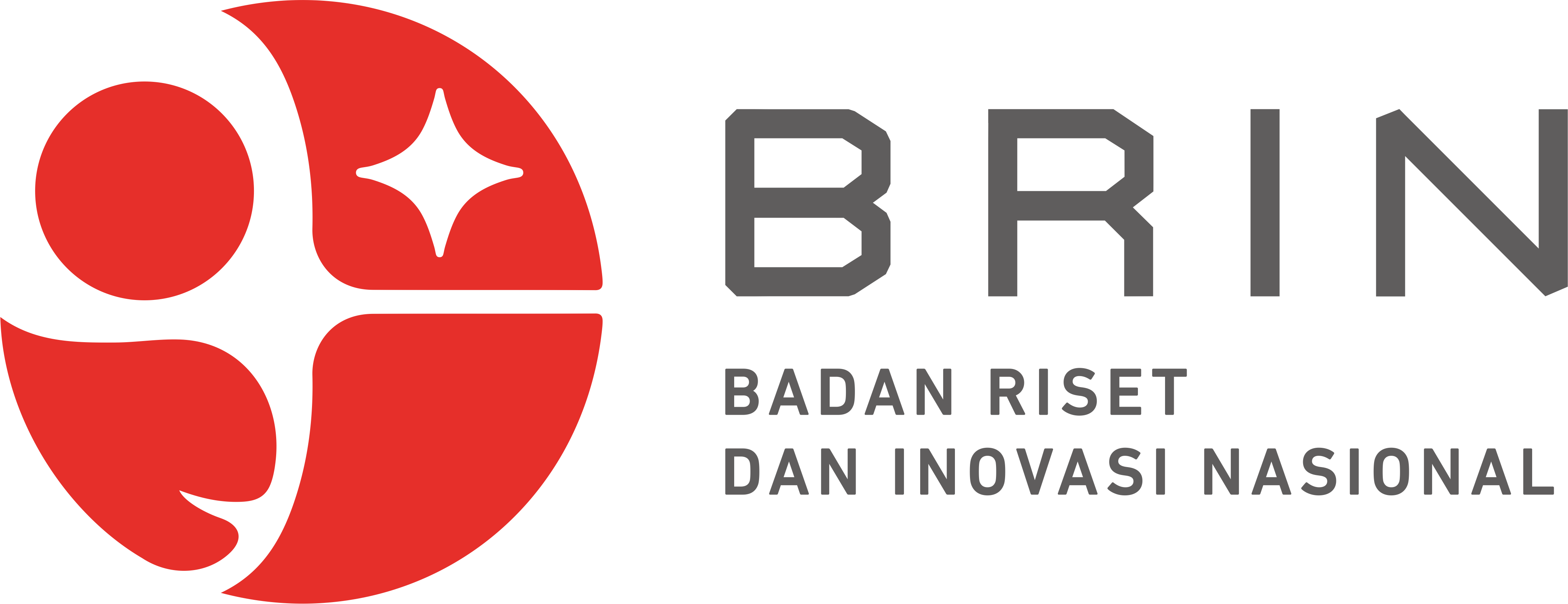Deep Learning Convolutional Neural Networks on Multi Label Image Classification of Torajanese Buffalo
Aslan Poetra Ramadhan(1*); Anik Nur Handayani(2); Ilham Ari Elbaith Zaeni(3);
(1) Universitas Negeri Malang
(2) Universitas Negeri Malang
(3) Universitas Negeri Malang
(*) Corresponding Author
AbstractConvolutional Neural Networks (CNNs) represent the primary methodology in the advancement of intelligent systems and technologies. The capacity to transition from prediction to categorization establishes CNNs as the primary benchmark in the advancement of deep artificial intelligence. This study use CNN implementation to categorize photos of Torajanese buffalo. The Torajanese buffalo is a distinctive animal species belonging to the Bos bubalis family, integral to the lives and culture of the Torajanese people residing in northern South Sulawesi. This species is integral to the culture, deeply intertwined with several traditional practices of the community. This renders the species distinctive for more investigation. The distinctiveness of the buffalo's style, coloration, and form differentiates them from one another. This study use Convolutional Neural Networks (CNNs) as the primary method to categorize Torajanese buffalo species using head photos and markers derived from local knowledge. This research employs InceptionV3, DenseNet, and Xception as primary architectures, each with variations corresponding to 10, 50, and 100 epochs, therefore enhancing the study. The findings of this investigation indicate that the InceptionV3 architecture has commendable performance across both versions, achieving an average AUC-ROC score of 0.96, although with increased execution time. Nonetheless, the DenseNet architecture demonstrates superior performance in its optimal configuration, achieving flawless accuracy; nonetheless, it incurs the most processing time for the frontal view of the Torajanese buffalo head test case. KeywordsCNN; Multi Label; Image Processing; Classification; Torajanese Buffalo;
|
Full Text:PDF |
Article MetricsAbstract view: 282 timesPDF view: 107 times |
Digital Object Identifier https://doi.org/10.33096/ilkom.v17i2.2905.162-169 https://doi.org/10.33096/ilkom.v17i2.2905.162-169
|
Cite |
References
A. Baan, M. D. Girik Allo, and A. A. Patak, “The cultural attitudes of a funeral ritual discourse in the indigenous Torajan, Indonesia,” Heliyon, vol. 8, no. 2, p. e08925, Feb. 2022, doi: 10.1016/j.heliyon.2022.e08925.
R. Tangdialla, Y. Lotong, A. L. Matasik, M. Nyhof, O. Pasoloran, and G. O. Mangiwa, “Rambu Solo’ in the Perspective of Toraja Young Generation,” Rev. Gest. Soc. E Ambient., vol. 18, no. 4, p. e06745, May 2024, doi: 10.24857/rgsa.v18n4-122.
R. Dewi, R. Tandu, R. Pasoloran, R. La’biran, and A. Baan, “Tedong (Buffalo): Symbol of Nobility, Humanity, and Entertaiment in Funeral Ceremony in The Indigenous Torajan, Indonesia,” Int. J. Relig., vol. 5, no. 8, Art. no. 8, May 2024, doi: 10.61707/j1qzmj60.
R. D. Haloho, J. Palayukan, A. Setiadi, E. Rianto, and N. Luthfi, “The Feasibility of Business of Buffalo Used in the Traditional Funeral Ceremony (Rambu solo) in West Sulawesi, Indonesia,” Adv. Anim. Vet. Sci., vol. 12, no. 3, 2024, doi: 10.17582/journal.aavs/2024/12.3.523.531.
P. W. Prihandini et al., “Biodiversity of Indonesian indigenous buffalo: First review of the status, challenges, and development opportunities,” Vet. World, pp. 2217–2229, Nov. 2023, doi: 10.14202/vetworld.2023.2217-2229.
M. Rusdin, D. D. Solihin, A. Gunawan, C. Talib, and C. Sumantri, “Genetic Variation of Eight Indonesian Swamp-Buffalo Populations Based on Cytochrome b Gene Marker,” Trop. Anim. Sci. J., vol. 43, no. 1, pp. 1–10, Apr. 2020, doi: 10.5398/tasj.2020.43.1.1.
A. S. Putra, P. Hijjang, and M. Tang, “Ethnic Value in Toraja’s Social Ritual: Cultural Education Perspective,” J. Edusci, vol. 4, no. 5, pp. 444–451, Jan. 2024, doi: 10.37899/journallaedusci.v4i5.1010.
S. N. Sirajuddin, I. Rasyid, Baharudin, I. Rosada, and Nurhapsa, “Characteristics of Buffalo Traders at the Bolu Animal Market, Toraja Regency, Indonesia,” J. Adv. Zool., vol. 44, no. 2, pp. 143–147, Sep. 2023, doi: 10.17762/jaz.v44i2.207.
A. K. Sendana, F. Rahman, N. Nasmilah, and H. Sahib, “Interpreting socio-cultural values in Toraja: The symbolism of Garonto’ Sura’ in Kada Tomina,” Edelweiss Appl. Sci. Technol., vol. 9, no. 4, pp. 2835–2844, Apr. 2025, doi: 10.55214/25768484.v9i4.6662.
P. Purwono, A. Ma’arif, W. Rahmaniar, H. I. K. Fathurrahman, A. Z. K. Frisky, and Q. M. U. Haq, “Understanding of Convolutional Neural Network (CNN): A Review,” Int. J. Robot. Control Syst., vol. 2, no. 4, pp. 739–748, Jan. 2023, doi: 10.31763/ijrcs.v2i4.888.
L. Alzubaidi et al., “Review of deep learning: concepts, CNN architectures, challenges, applications, future directions,” J. Big Data, vol. 8, no. 1, p. 53, Mar. 2021, doi: 10.1186/s40537-021-00444-8.
Herman et al., “A Comperative Study on Efficacy of CNN VGG-16, DenseNet121, ResNet50V2, And EfficientNetB0 in Toraja Carving Classification,” Indones. J. Data Sci., vol. 6, no. 1, Art. no. 1, Mar. 2025, doi: 10.56705/ijodas.v6i1.220.
F. Aljuaydi, M. Zidan, and A. M. Elshewey, “A Deep Learning CNN-GRU-RNN Model for Sustainable Development Prediction in Al-Kharj City,” Eng. Technol. Appl. Sci. Res., vol. 15, no. 1, pp. 20321–20327, Feb. 2025, doi: 10.48084/etasr.9247.
L. Syafie, H. Azis, and F. T. Admojo, “Optimizing Javanese Numeral Recognition Using YOLOv8 Technology: An Approach for Digital Preservation of Cultural Heritage,” Indones. J. Data Sci., vol. 6, no. 1, Art. no. 1, Mar. 2025, doi: 10.56705/ijodas.v6i1.239.
F. Joiya, “OBJECT DETECTION: YOLO VS FASTER R-CNN,” Int. Res. J. Mod. Eng. Technol. Sci., vol. 4, no. 9, Sep. 2022, doi: 10.56726/IRJMETS30226.
H. Azis, Nasrullah, M. Abdullah, S. Ismail, Purnawansyah, and L. Syafie, “A Comparative Study of YOLO Models for Enhanced Vehicle Detection in Complex Aerial Scenarios,” in 2025 19th International Conference on Ubiquitous Information Management and Communication (IMCOM), Bangkok, Thailand: IEEE, Jan. 2025, pp. 1–8. doi: 10.1109/IMCOM64595.2025.10857527.
S. Binta Islam, D. Valles, T. J. Hibbitts, W. A. Ryberg, D. K. Walkup, and M. R. J. Forstner, “Animal Species Recognition with Deep Convolutional Neural Networks from Ecological Camera Trap Images,” Animals, vol. 13, no. 9, p. 1526, May 2023, doi: 10.3390/ani13091526.
Fernanda Januar Pratama, Wikky Fawwaz Al Maki, and Febryanti Sthevanie, “Big Cats Classification Based on Body Covering,” J. RESTI Rekayasa Sist. Dan Teknol. Inf., vol. 5, no. 5, pp. 984–991, Oct. 2021, doi: 10.29207/resti.v5i5.3328.
H. Azis, Nirmala, L. Syafie, Herman, F. Fattah, and T. Hasanuddin, “Unveiling Algorithm Classification Excellence: Exploring Calendula and Coreopsis Flower Datasets with Varied Segmentation Techniques,” in 2024 18th International Conference on Ubiquitous Information Management and Communication (IMCOM), Kuala Lumpur, Malaysia: IEEE, Jan. 2024, pp. 1–7. doi: 10.1109/IMCOM60618.2024.10418246.
L. Wang and S. Deng, “Hypergraph Convolution Network Classification for Hyperspectral and LiDAR Data,” Sensors, vol. 25, no. 10, p. 3092, May 2025, doi: 10.3390/s25103092.
N. Bacanin, C. Stoean, M. Zivkovic, D. Jovanovic, M. Antonijevic, and D. Mladenovic, “Multi-Swarm Algorithm for Extreme Learning Machine Optimization,” Sensors, vol. 22, no. 11, p. 4204, May 2022, doi: 10.3390/s22114204.
[22] S. Nakagawa et al., “Rapid literature mapping on the recent use of machine learning for wildlife imagery,” Peer Community J., vol. 3, p. e35, Apr. 2023, doi: 10.24072/pcjournal.261.
A. R. Manga, “Data Buffalo Toraja,” vol. 2, May 2025, doi: 10.17632/kbft73pdkw.2.
Y. Quan, Y. Chen, Y. Shao, H. Teng, Y. Xu, and H. Ji, “Image denoising using complex-valued deep CNN,” Pattern Recognit., vol. 111, p. 107639, Mar. 2021, doi: 10.1016/j.patcog.2020.107639.
M. Upreti, C. Pandey, A. S. Bist, B. Rawat, and M. Hardini, “Convolutional Neural Networks in Medical Image Understanding,” Aptisi Trans. Technopreneurship ATT, vol. 3, no. 2, pp. 6–12, Sep. 2021, doi: 10.34306/att.v3i2.188.
P. Oza, P. Sharma, S. Patel, F. Adedoyin, and A. Bruno, “Image Augmentation Techniques for Mammogram Analysis,” J. Imaging, vol. 8, no. 5, p. 141, May 2022, doi: 10.3390/jimaging8050141.
N. E. Khalifa, M. Loey, and S. Mirjalili, “A comprehensive survey of recent trends in deep learning for digital images augmentation,” Artif. Intell. Rev., vol. 55, no. 3, pp. 2351–2377, Mar. 2022, doi: 10.1007/s10462-021-10066-4.
M. M. A. Monshi, J. Poon, V. Chung, and F. M. Monshi, “CovidXrayNet: Optimizing data augmentation and CNN hyperparameters for improved COVID-19 detection from CXR,” Comput. Biol. Med., vol. 133, p. 104375, Jun. 2021, doi: 10.1016/j.compbiomed.2021.104375.
Y. Liu, H. Pu, and D.-W. Sun, “Efficient extraction of deep image features using convolutional neural network (CNN) for applications in detecting and analysing complex food matrices,” Trends Food Sci. Technol., vol. 113, pp. 193–204, Jul. 2021, doi: 10.1016/j.tifs.2021.04.042.
M. Park, D. Q. Tran, S. Lee, and S. Park, “Multilabel Image Classification with Deep Transfer Learning for Decision Support on Wildfire Response,” Remote Sens., vol. 13, no. 19, p. 3985, Oct. 2021, doi: 10.3390/rs13193985.
Harlinda, A. Rendi, H. Azis, D. Indra, L. N. Hayati, and N. Kurniati, “Classification of Cia-Cia Letters Using MobileNetV2 and CNN Methods,” in 2025 19th International Conference on Ubiquitous Information Management and Communication (IMCOM), Jan. 2025, pp. 1–6. doi: 10.1109/IMCOM64595.2025.10857478.
S. P. G, V. S. K, and D. K, “Enhanced Bird Species Image Recognition and Classification using MobileNet and InceptionV3 Transfer learning Architectures,” ELCVIA Electron. Lett. Comput. Vis. Image Anal., vol. 24, no. 1, pp. 118–133, May 2025, doi: 10.5565/rev/elcvia.2020.
L. Bothmann et al., “Automated wildlife image classification: An active learning tool for ecological applications,” Ecol. Inform., vol. 77, p. 102231, Nov. 2023, doi: 10.1016/j.ecoinf.2023.102231.
W. Shafik, A. Tufail, C. Liyanage De Silva, and R. A. Awg Haji Mohd Apong, “A novel hybrid inception-xception convolutional neural network for efficient plant disease classification and detection,” Sci. Rep., vol. 15, no. 1, p. 3936, Jan. 2025, doi: 10.1038/s41598-024-82857-y.
A. Delplanque, S. Foucher, P. Lejeune, J. Linchant, and J. Théau, “Multispecies detection and identification of African mammals in aerial imagery using convolutional neural networks,” Remote Sens. Ecol. Conserv., vol. 8, no. 2, pp. 166–179, Apr. 2022, doi: 10.1002/rse2.234.
M. Sivakumar, S. Parthasarathy, and T. Padmapriya, “Trade-off between training and testing ratio in machine learning for medical image processing,” PeerJ Comput. Sci., vol. 10, p. e2245, Sep. 2024, doi: 10.7717/peerj-cs.2245.
S. Surono, M. Rivaldi, and N. Irsalinda, “Classification Using U-Net CN on Multi-Resolution CT Scan Image,” in Frontiers in Artificial Intelligence and Applications, A. J. Tallón-Ballesteros, Ed., IOS Press, 2024. doi: 10.3233/FAIA241412.
K. Namdar, M. A. Haider, and F. Khalvati, “A Modified AUC for Training Convolutional Neural Networks: Taking Confidence Into Account,” Front. Artif. Intell., vol. 4, p. 582928, Nov. 2021, doi: 10.3389/frai.2021.582928.
E. Richardson, R. Trevizani, J. A. Greenbaum, H. Carter, M. Nielsen, and B. Peters, “The receiver operating characteristic curve accurately assesses imbalanced datasets,” Patterns, vol. 5, no. 6, p. 100994, Jun. 2024, doi: 10.1016/j.patter.2024.100994.
Refbacks
- There are currently no refbacks.
Copyright (c) 2025 Aslan Poetra Ramadhan, Anik Nur Handayani, Ilham Ari Elbaith Zaeni

This work is licensed under a Creative Commons Attribution-ShareAlike 4.0 International License.







